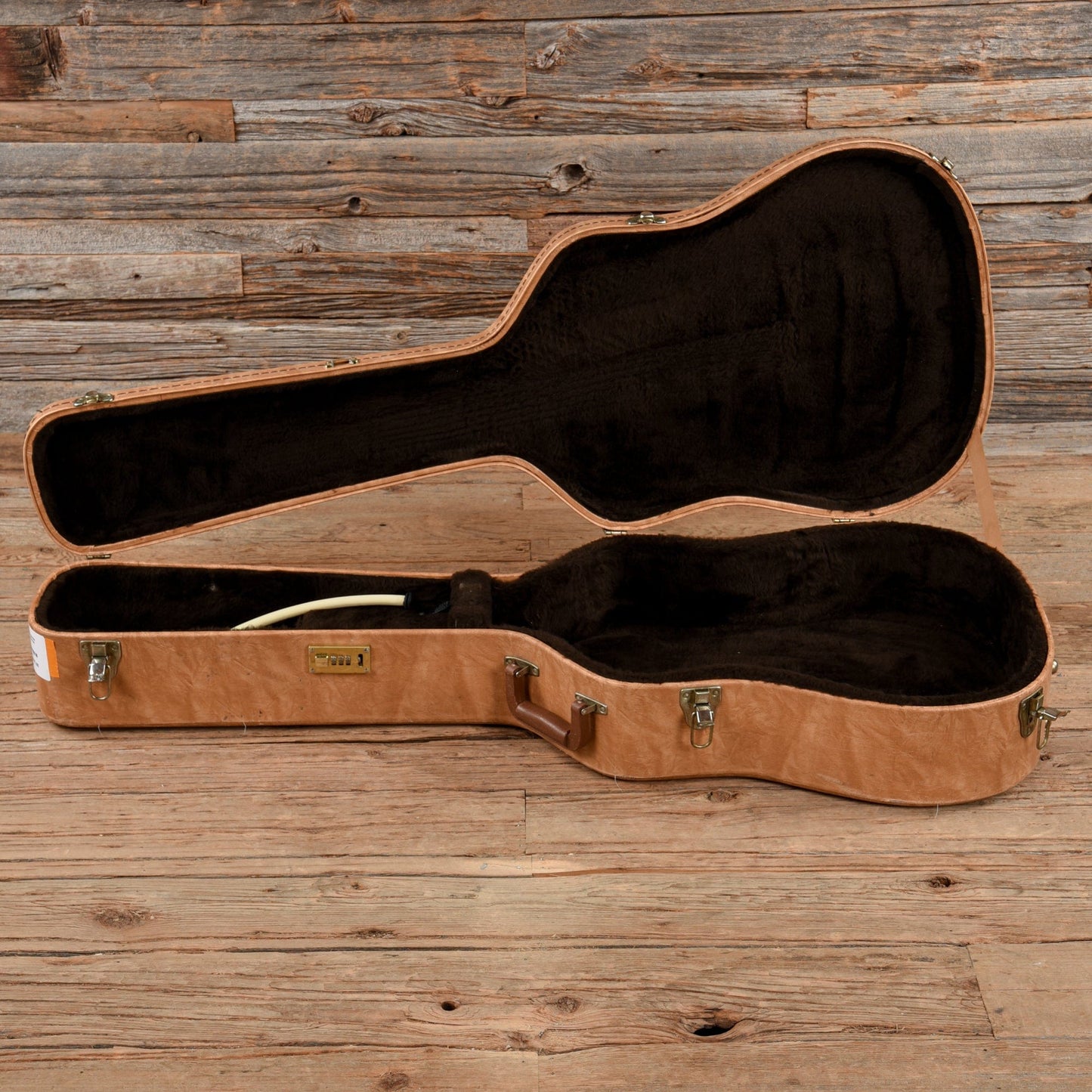This item is currently out of stock, but don't fret! We have a lot of acoustic guitars in stock. Shop Now











Description
Description
The following specs were carefully collected and recorded by a skilled technician.
For a more detailed description and questions regarding sound, feel, or cosmetic
condition, please visit our Lincoln Avenue showroom or call to speak to one of our
Used and Vintage experts.
| Finish Details: | Original |
| Top Material: | Spruce |
| Body Material: | Maple |
| Body Details: | Curly maple back and sides with spruce top. There is a repaired crack running from the treble side of the soundhole downward, which has been reinforced with internal cleats. The paper label inside the soundhole is missing. |
| Neck Material: | Mahogany |
| Fingerboard Material: | Pearloid |
| Neck Profile: | "V" profile |
| Neck Thickness (IN): | .94" (1st fret), 1.07" (10th fret) |
| Fingerboard Radius: | 14.00" |
| Nut Width: | 1-3/4" |
| Scale Length: | 24 3/4" |
| Neck Details: | Mahogany neck with bound pearloid fingerboard, Brazilian rosewood block inlays with banjo-style "hearts and wreaths" pearl inlays, pearloid headstock veneer with inlaid pearl script Gibson logo, and headstock truss rod adjustment. The logo style dates to 1933. |
| Electronics: | None |
| Hardware: | The nut and saddle have been replaced. The bridge also appears to have been previously reglued. |
| Weight: | 3lbs 11oz |
| Modifications/Repairs: | The nut and saddle have been replaced. The bridge appears to have been reglued. There is a repaired crack in the top, which has been reinforced with internal cleats. |
| Case Details: | Hardshell case |
| Cosmetic Condition: | The guitar has plenty of nice aging present, with checking, small dings, and assorted scratches. There is a repaired crack in the top along the inner edge of the pickguard; the pickguard has also yellowed and curled with time. |
| Serial Number: | 682 |
| Tech Notes: | The guitar plays well with low action, and is currently set up with 12-53 light gauge phosphor bronze strings. The neck has light relief, and the truss rod is close to its maximum position, but the guitar sets up and plays well. The frets are narrow and low with light wear and divots present. The model, appointments, and logo date the instrument to 1933. |











